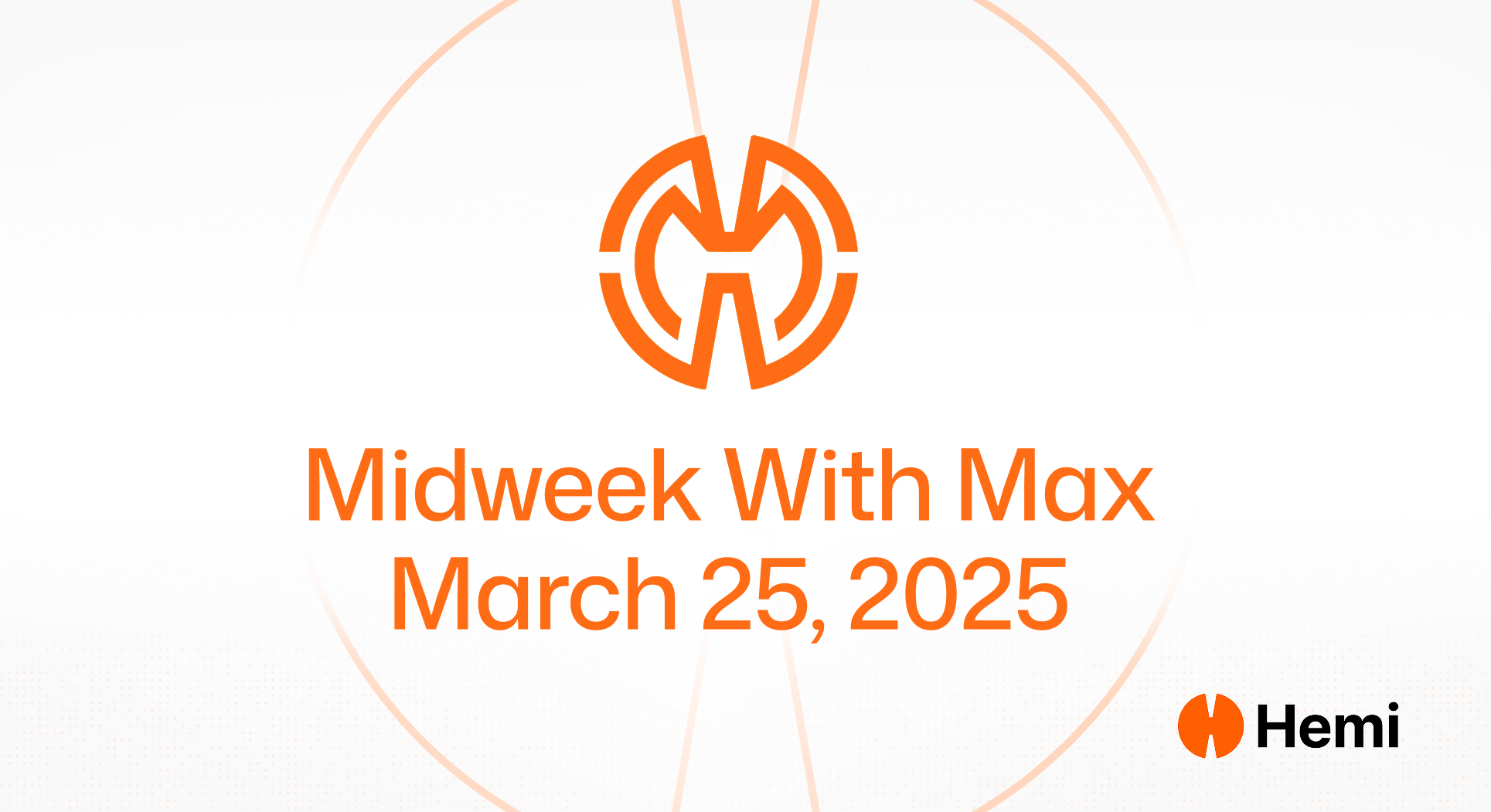Midweek With Max for March 25, 2025
This week’s MwM was our biggest ever. Check it out!

Another packed Midweek with Max brought together the Hemi community, core team, and partners to talk tech updates, ecosystem expansion, and community questions. This week’s guest was Filip from Redstone, one of Hemi’s earliest collaborators.
Redstone is positioning itself as a challenger in the Oracle space. Filip, who joined Redstone early on, said the team’s culture is focused on saying “yes” and figuring things out. That mindset helped Redstone move fast and fill a gap left by more established oracle providers. Their push-model approach gained traction when major DeFi protocols needed accurate price feeds for assets that were previously unsupported. According to Filip, Redstone has now secured over $9 billion in value and offers full support for push-model price feeds on Hemi, including LSTs and LRTs like PumpBTC, mBTC, and BIFBTC.
Filip emphasized Redstone’s alignment with Hemi’s focus on onchain-native assets. Redstone’s presence on Hemi is growing, with deployments already live for protocols like Descent, BitFi, and Satoshi Protocol. He invited devs building on Hemi to integrate their feeds, noting that everything is free to use and easy to implement.
From the Hemi core team, Max followed with a long set of updates. One of the most important was that SnapSync support for hVM is on the way. SnapSync will make it faster to spin up Hemi nodes by syncing only recent state data. It won’t support full historical lookbacks, but for most users and devs, it’s a useful shortcut to get started.
On the incentive side, Max said the mainnet point system has shifted. Points earned from Hemi staking have been reduced, and higher multipliers are now available to those who provide liquidity on DEXs and other productive protocols. A dashboard is now live showing those changes, including 3x, 5x, and 8x multipliers for specific LPs.
Testnet points from the Absinthe system are still being finalized, but the data cleanup process is nearly done. Mainnet pop point mining is live, and about 105 unique EOAs have already participated. Currently, 100 pop points are distributed per keystone, divided across all participants who publish a keystone to Bitcoin in time. Soon, the protocol will switch to a dynamic reward model that targets four miners per keystone.
Other core topics included tokenomics, TGE timing, and mainnet rewards. While no hard dates were given, Max reaffirmed that the HEMI token will likely use the ticker $HEMI, and details around emissions, allocations, and utility will be released closer to TGE. He also confirmed there will be CEX listings, and repeated that there is currently no HEMI token on the market—any that appear are fake.
Utility for the $HEMI token includes gas discounts, sequencer staking, DAO governance, and cross-chain infrastructure. Eventually, users will also be able to participate in custodianship systems and publish L3 state to Hemi. A converged staking system is also in development to let users participate across multiple parts of the protocol from a single stake.
In the final portion of the call, Jon Greenwood and Rick answered questions about Deimos, the anti-sybil tool used for user verification. While verification is not yet mandatory, it will be required at several stages, and users will need to verify multiple times to confirm long-term control over a wallet. Jon explained that the process includes a small fee to cover backend services.
The community portion shifted to lighter questions, including plans for Discord role perks, gaming sessions, and NFTs. Hemi Hatchlings will be minted soon on mainnet, and the team is exploring fun ways to recognize community involvement.
Midweek with Max is gaining momentum. Attendance hit a new record. So did the pace of announcements. Whether you’re tracking pop mining, building with hVM, or just trying to rack up points, the main thread was clear: Hemi is still early, but it’s moving fast.